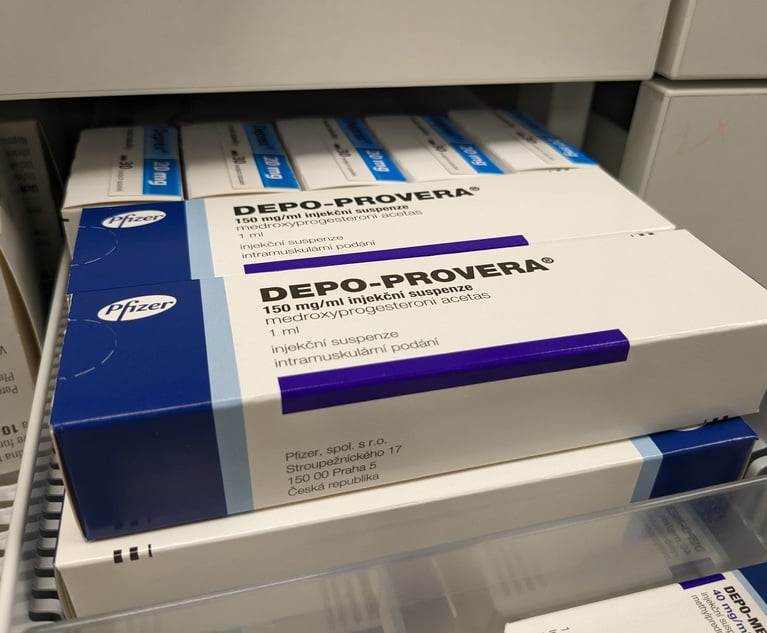It was nice while it lasted. But it’s probably safe to say the high profile dispute between U.K.-listed Burford Capital and U.S. investment firm Muddy Waters Research over the last week has tempered the hype that the litigation funding market has enjoyed in recent years.
Burford has been the poster child of the industry’s growth, with its share price rising more than 700% since the start of 2016 up until last month, where is was trading at around 1600p. But following the Muddy Waters report questioning the company’s finances, its shares are now levelling out at about half of that.
Whether or not the criticism of Burford – that it is “arguably already insolvent” – will have a knock-on effect on the wider market partly comes down to how justified it is.
After all, it is easy to be skeptical of Muddy Waters’ arguments, given it holds a short position in the company so will benefit from a fall in the share price. Another short seller, the playfully named Gotham City Research, this week claimed Burford was “inappropriately financed”.
In response, Burford issued a fierce rebuttal and hired an elite trio of law firms to advise it.
But some of the accusations do appear fairly hard to dismiss.
For example, Burford’s operating expenses of 9% of funds do seem high, especially given the private equity and hedge fund industries are constantly criticised for having management fees of 2%. Burford largely brushed over this in its response, but one lawyer familiar with the market likened Burford’s fee to that of the big investment banks, such as Goldman Sachs and JP Morgan, which can charge around 10% on transactions.
Burford’s use of debt to fund investment also sounds worrying when Muddy Waters asserts the firm’s debt and funding commitments “greatly exceed” its $880.3 million adjusted invested capital, putting it at high risk of suffering a “liquidity crunch”. Similarly, Gotham City argues that litigation assets “should not be financed with debt”, arguing that it poses a real risk of an asset/liability “mismatch nightmare”.
To this, Burford offered a terse rebuttal, saying it had a “low debt level” and the capacity to take on more debt “as desired”, stating its net debt to equity ratio was 0.3x. It is important to note that both sides appear to be talking about slightly different things. Muddy Waters talks about “debt and funding commitments”, while Burford talks about “net debt”. Perhaps both sides could be accused of cherry picking their numbers.
Finally, and perhaps most importantly, Muddy Waters described Burford’s practice of “consistently” booking non-cash profits when calculating its returns as “unforgivable”, while Gotham City said trading at “extreme premiums” on book value is both unsustainable and “foolish”.
Burford did not attempt to justify the practice beyond saying it has always been transparent on non-cash recoveries, of which the company has “virtually none”, or at any rate less than $1 million “awaiting monetisation”. It is not entirely clear if this will prove compelling to prospective investors though.
Regardless of where the truth lies it is probably fair to say that the litigation funding market will not be allowed to continue its unabashed growth like it did before. Much more scrutiny will now be applied to the numbers of firms, whether or not they employ the same financial tactics of Burford.
It is notable that the debacle sparked other litigation funders into action, with fellow listed-funder LCM distancing itself from Burford’s accounting practices. “We are not all the same,” it protested.
And yet there is also a broad acceptance that the market is set for further growth based on the fact that the returns litigation funding provides are uncorrelated with the rest of the market. Investors, particularly hedge funds, love to find assets that will not be affected by stock market, property or bond trends.
It is this, rather than the certainty of strong returns, that has helped draw such large sums of money to the industry, which in turn has led to much of the hype. It does not necessarily matter that returns might not be as good as hoped, the point is they will still arrive even in a market meltdown.
And it is still possible that litigation funding starts to provide big returns to investors too. The unpredictable nature of litigation means there will be dry patches – Muddy Waters says that Burford’s returns have so far been driven by just four investments – yet it could also mean there are some investments that prove very lucrative.
Calunius Capital, a litigation funder co-founded by Osborne Clarke senior partner Leslie Perrin, decided at the end of last year to call it a day after several favourable settlements including Rusoro Mining’s claim against Venezuela.
So it is not the end of the road for the industry, far from it. But the litigation funding bandwagon has clearly hit a bump in the road and it may find it impossible to gather the same momentum as before.
NOT FOR REPRINT
© 2024 ALM Global, LLC, All Rights Reserved. Request academic re-use from www.copyright.com. All other uses, submit a request to [email protected]. For more information visit Asset & Logo Licensing.
You Might Like
View All

From 'Confusing Labyrinth' to Speeding 'Roller Coaster': Uncertainty Reigns in Title IX as Litigators Await Second Trump Admin
6 minute read
New Class Action Points to Fears Over Privacy, Abortions and Fertility
Trending Stories
- 1Friday Newspaper
- 2Judge Denies Sean Combs Third Bail Bid, Citing Community Safety
- 3Republican FTC Commissioner: 'The Time for Rulemaking by the Biden-Harris FTC Is Over'
- 4NY Appellate Panel Cites Student's Disciplinary History While Sending Negligence Claim Against School District to Trial
- 5A Meta DIG and Its Nvidia Implications
Who Got The Work
Michael G. Bongiorno, Andrew Scott Dulberg and Elizabeth E. Driscoll from Wilmer Cutler Pickering Hale and Dorr have stepped in to represent Symbotic Inc., an A.I.-enabled technology platform that focuses on increasing supply chain efficiency, and other defendants in a pending shareholder derivative lawsuit. The case, filed Oct. 2 in Massachusetts District Court by the Brown Law Firm on behalf of Stephen Austen, accuses certain officers and directors of misleading investors in regard to Symbotic's potential for margin growth by failing to disclose that the company was not equipped to timely deploy its systems or manage expenses through project delays. The case, assigned to U.S. District Judge Nathaniel M. Gorton, is 1:24-cv-12522, Austen v. Cohen et al.
Who Got The Work
Edmund Polubinski and Marie Killmond of Davis Polk & Wardwell have entered appearances for data platform software development company MongoDB and other defendants in a pending shareholder derivative lawsuit. The action, filed Oct. 7 in New York Southern District Court by the Brown Law Firm, accuses the company's directors and/or officers of falsely expressing confidence in the company’s restructuring of its sales incentive plan and downplaying the severity of decreases in its upfront commitments. The case is 1:24-cv-07594, Roy v. Ittycheria et al.
Who Got The Work
Amy O. Bruchs and Kurt F. Ellison of Michael Best & Friedrich have entered appearances for Epic Systems Corp. in a pending employment discrimination lawsuit. The suit was filed Sept. 7 in Wisconsin Western District Court by Levine Eisberner LLC and Siri & Glimstad on behalf of a project manager who claims that he was wrongfully terminated after applying for a religious exemption to the defendant's COVID-19 vaccine mandate. The case, assigned to U.S. Magistrate Judge Anita Marie Boor, is 3:24-cv-00630, Secker, Nathan v. Epic Systems Corporation.
Who Got The Work
David X. Sullivan, Thomas J. Finn and Gregory A. Hall from McCarter & English have entered appearances for Sunrun Installation Services in a pending civil rights lawsuit. The complaint was filed Sept. 4 in Connecticut District Court by attorney Robert M. Berke on behalf of former employee George Edward Steins, who was arrested and charged with employing an unregistered home improvement salesperson. The complaint alleges that had Sunrun informed the Connecticut Department of Consumer Protection that the plaintiff's employment had ended in 2017 and that he no longer held Sunrun's home improvement contractor license, he would not have been hit with charges, which were dismissed in May 2024. The case, assigned to U.S. District Judge Jeffrey A. Meyer, is 3:24-cv-01423, Steins v. Sunrun, Inc. et al.
Who Got The Work
Greenberg Traurig shareholder Joshua L. Raskin has entered an appearance for boohoo.com UK Ltd. in a pending patent infringement lawsuit. The suit, filed Sept. 3 in Texas Eastern District Court by Rozier Hardt McDonough on behalf of Alto Dynamics, asserts five patents related to an online shopping platform. The case, assigned to U.S. District Judge Rodney Gilstrap, is 2:24-cv-00719, Alto Dynamics, LLC v. boohoo.com UK Limited.
Featured Firms
Law Offices of Gary Martin Hays & Associates, P.C.
(470) 294-1674
Law Offices of Mark E. Salomone
(857) 444-6468
Smith & Hassler
(713) 739-1250










